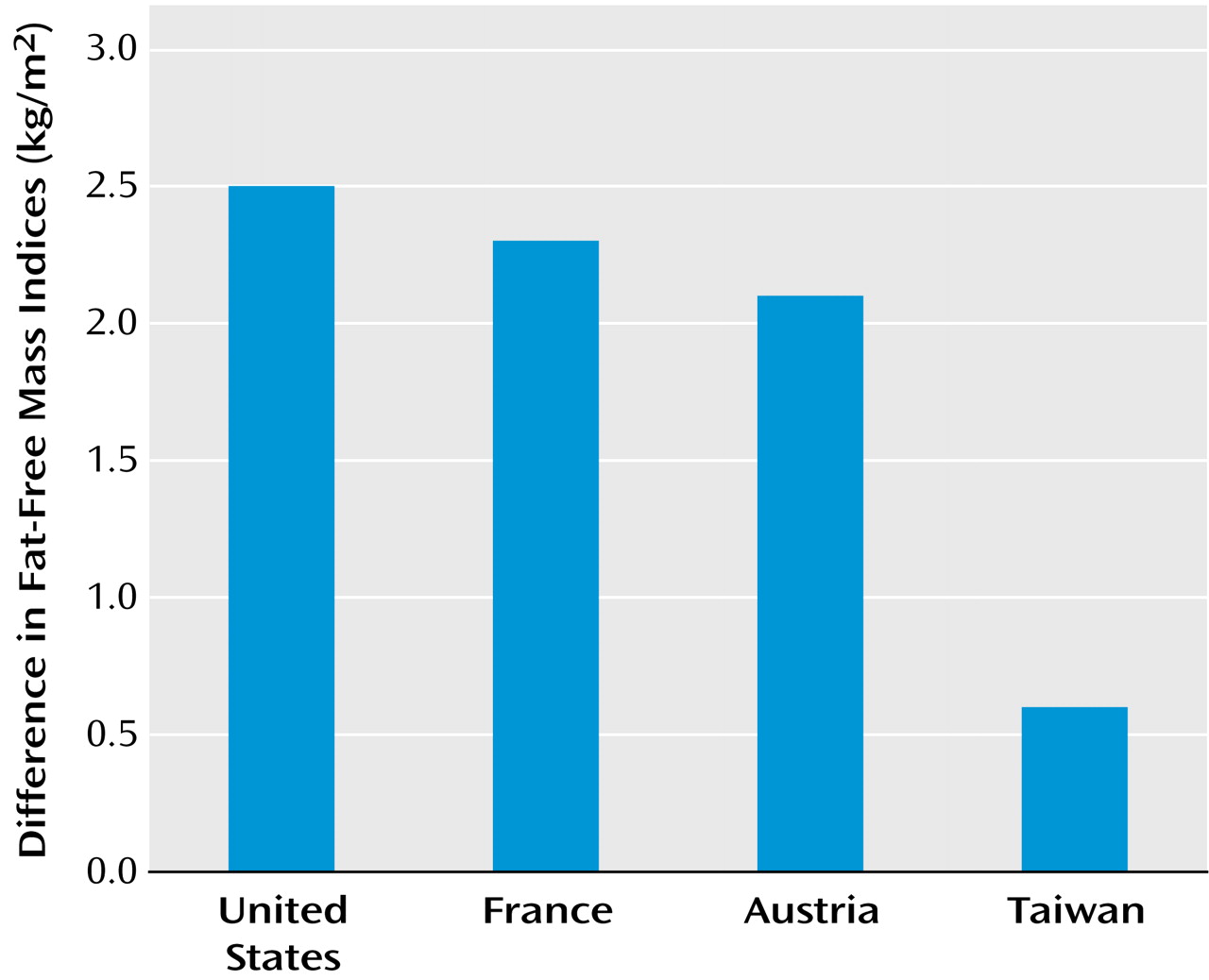Gender, Social Support, and Depression
The lives of male-female twin pairs reveal a striking difference between men and women in how social relationships influence the risk for major depression. Kendler et al. (p. 250) examined the social networks of 1,057 pairs of adult opposite-sex twins and 1 year later assessed their rates of major depression. Among women, the risk of depression rose sharply as the level of social support fell. Even though the men reported less social support overall, it did not affect their likelihood of depression. This disparity in the effect of emotionally supportive social relationships does not explain the sex difference in the prevalence of depression but does suggest different pathways in depression risk for women and men.
Male Body Image, East and West
Men in Europe and the United States perceive the ideal man as much more muscular than themselves, and abuse of anabolic steroids is a major public health problem. To determine whether this “Adonis complex” is specific to Western cultures, Yang et al. (p. 263) asked male university students in Taiwan to choose pictures corresponding to their own bodies, the average, the ideal, and what women prefer. Although their ideal was more muscular than their self-image, the discrepancy between their self-image and their estimate of women’s preference was only half as great as that previously established for American men. In Taiwanese women’s magazines, advertising portrayed Western-looking men in states of undress about 43% of the time, but the rate for Asian men was only 5%. It appears, therefore, that the Taiwanese place less emphasis on muscularity in men than do Western cultures. These findings may help explain why muscle dysmorphia and anabolic steroid abuse are rare in Taiwan as compared to the United States and Europe.
Wounds Compound Combat Trauma
Psychodynamic theories have sometimes suggested that physical injury would protect a person against posttraumatic stress disorder (PTSD). Numerous studies have challenged that view but have not distinguished the effects of trauma-related injury from effects of the trauma itself. Because military combat is inherently traumatic, Koren et al. (p. 276) individually compared 60 injured soldiers with soldiers who had participated in the same combat situation but had not been injured. The rates of PTSD in the injured and noninjured groups were 17% and 3%, respectively, confirming the negative influence of bodily injury. PTSD was not related to the severity of the injury, however. The injured and noninjured soldiers differed in the degree of peritraumatic dissociation, e.g., depersonalization, amnesia. The additional psychological peril posed by combat wounds, beyond the effects of combat itself, suggests that surgery is not the only intervention needed by wounded soldiers.
Threat Avoidance by Maltreated Children
In many adults with posttraumatic stress disorder (PTSD), their attention is biased toward threatening stimuli. Studies of children have been complicated by use of verbal stimuli, which are inappropriate for many children. Pine et al. (p. 291) showed photographs of faces to 7–13-year-old children who had been physically or sexually abused and/or neglected. In the key trials, a threatening face was paired with a neutral face, and the child pressed a key to indicate where a dot target appeared, either on the right or on the left. The difference in reaction time between trials with the dot target appearing on the same side as the threatening face and trials with the dot target on the opposite side was used to measure the bias of attention toward or away from the threatening stimuli. The children demonstrated a bias of attention away from the threatening faces, unlike adults. Severity of physical abuse and a diagnosis of PTSD predicted avoidance of threatening faces in 500-msec presentations.
Suicide Prediction: A Bigger Picture
Identifying predictors of suicide is difficult because suicide is rare. A really large group of people is needed to provide a sufficient subset of those who commit suicide. Among 7,968 people treated for deliberate self-harm in British emergency rooms over 4 years, Cooper et al. (p. 297) determined subsequent suicides from a national database. The suicide rate was higher for males than for females, but the females’ rate was higher in relation to that for the same-sex general population. Suicide risk was greatest during the 6 months following the self-harm episode and was higher for patients referred to medical or surgical services or mental health specialists. Other predictors included not living with a close relative, avoiding discovery of the self-harm by others, and, for people under age 35, misusing alcohol. Interventions can be targeted accordingly and should include women, whose self-injurious acts are sometimes not taken seriously.
Images in Psychiatry
Charles Darwin, 1802–1882 (p. 249)



